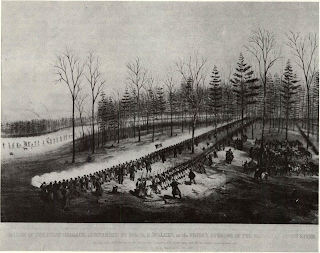The use of explosive ball ammunition in rifles has
British General Jacobs, of the East India Service, is
here. The explosive bullet is tied up with an understanding of the savagery of the conflict, while a few
“The Jacobs rifle, so called from its maker, General
“General Jacobs reports excellent practice with this
The use of the rifle in this period, prior to the War,
The early explosive bullet experimenters were not
caliber anyway, the wound differences attendant on
Norton’s bullet was studied by a British committee
It was Colonel John Jacobs, founder of the Scinde
Some idea of the extent of Jacob’s experiments will be
Of the rifles themselves “Stonehenge” records that:
The recoil is by no means pleasant. The gauge is 32. This
Something of an anomaly, these short, powerful
The Jacobs bullet was a massive shell, thick walled,
In his Memoirs, Grant conjectured that the defending Southern riflemen used explosive musket balls,
“A solid ball would have hit as well. Their use is
balls. Dr. Burton has one. A conical ball, pointed and
The C. S. bullet may have been inspired by a West
Improving on this general description of a high
Though evidence proves explosive bullets were issued by both sides, the post-War charges that the
7 #
British General Jacobs, of the East India Service, is
here. The explosive bullet is tied up with an understanding of the savagery of the conflict, while a few
“The Jacobs rifle, so called from its maker, General
“General Jacobs reports excellent practice with this
The use of the rifle in this period, prior to the War,
The early explosive bullet experimenters were not
caliber anyway, the wound differences attendant on
Norton’s bullet was studied by a British committee
It was Colonel John Jacobs, founder of the Scinde
Some idea of the extent of Jacob’s experiments will be
Of the rifles themselves “Stonehenge” records that:
The recoil is by no means pleasant. The gauge is 32. This
Something of an anomaly, these short, powerful
The Jacobs bullet was a massive shell, thick walled,
In his Memoirs, Grant conjectured that the defending Southern riflemen used explosive musket balls,
“A solid ball would have hit as well. Their use is
balls. Dr. Burton has one. A conical ball, pointed and
The C. S. bullet may have been inspired by a West
Improving on this general description of a high
Though evidence proves explosive bullets were issued by both sides, the post-War charges that the
7 #


Comments
Post a Comment